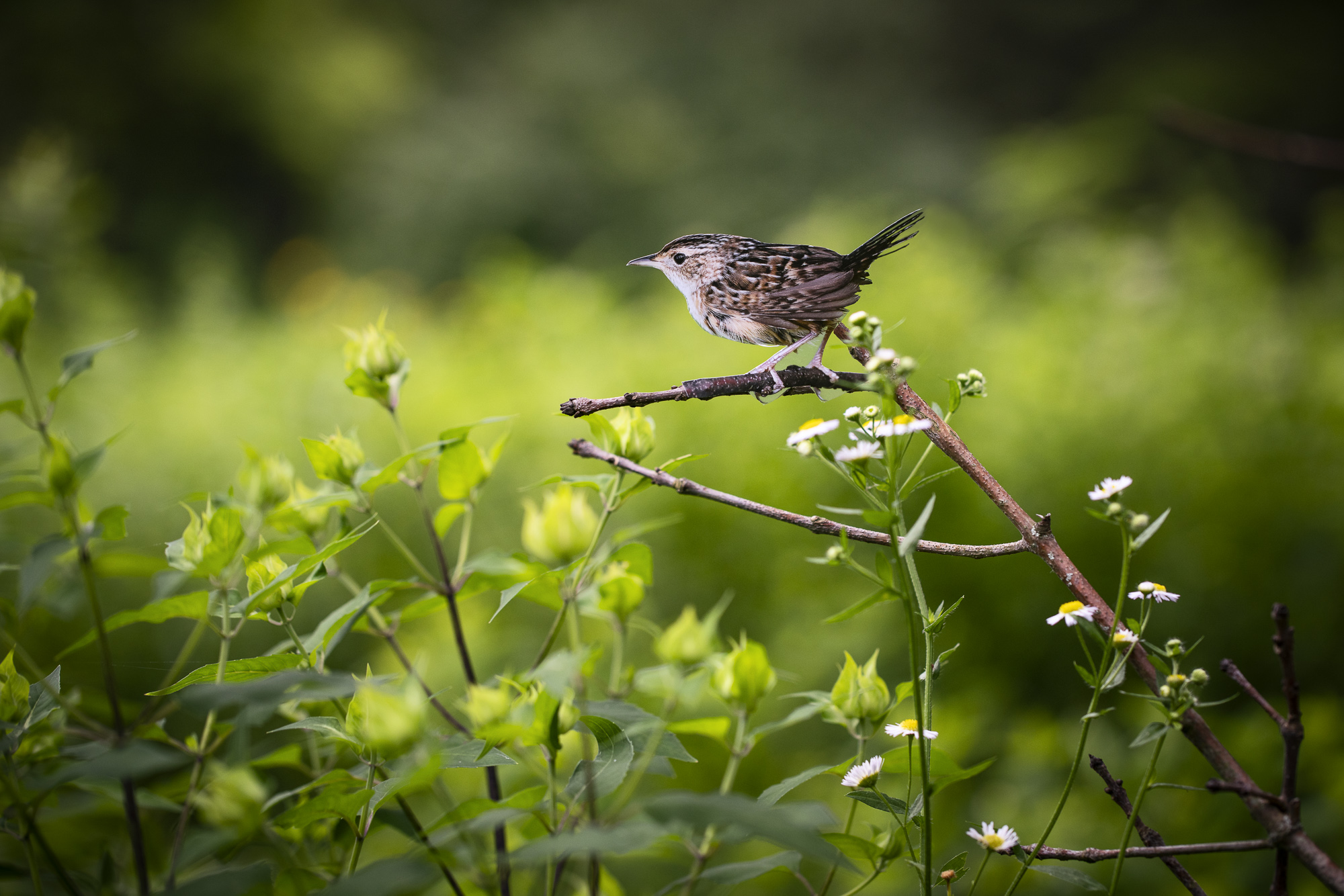
Sedge Wren
SEWR- Scientific: Cistothorus stellaris
- Spanish: Cucarachero Culibarrado
- French: Troglodyte à bec court
- Family: Wrens
- Bird Code: SEWR
If there is a 3° C increase in temperature due to unmitigated climate change
Predicted percentage of habitat lost
48%
Summer range lost
16%
Winter range lost
Climate and other threats imore info
Habitat
Live and breed in shallow grassy marshes, wet fields and meadows with sedges or scattered bushes.
Range
Breed in north-central U.S. and Canada. Winter in the southeastern U.S. and northeastern Mexico.

Did you know?
Some male Sedge Wrens have several mates while others are monogamous. The latter’s nestlings have better survival rates. But those that mate with several partners can end up having more offspring in total, so it’s a win-win situation in both cases!